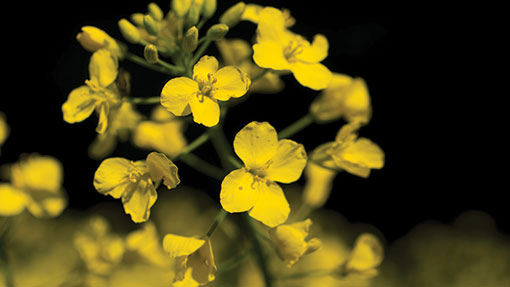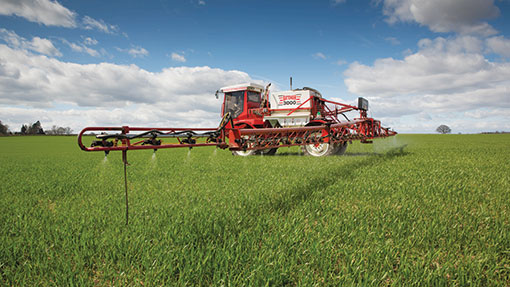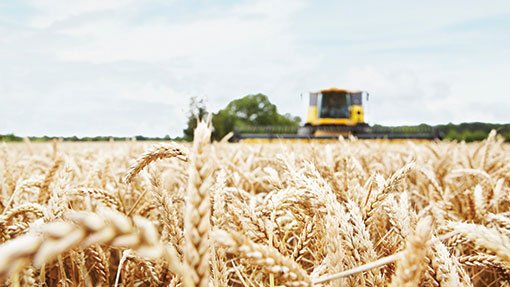Cereals 2014: Eight key arable and crop topics

Eight technical topics are set to dominate Cereals 2014. Here we preview some of the science and technology being brought to life in the crop plots to help farmers.
1. Boosting yields
Yield is the key driver of profits, but has hit something of a plateau across many crops. This, together with the need to feed the world’s rapidly increasing population, means raising yield is a key theme at Cereals 2014.
NIAB TAG provides a fascinating insight into how pre-breeding research is developing crops to meet market and environmental challenges. This includes new lines from its superwheat crossing programme which aims:
- To introduce more genetic diversity from the wild
- Develop new sources of yield improvement, drought tolerance, disease resistance and input use efficiency.
- Wheat genetics are a key feature on the Velcourt stand, including:
- John Innes Centre research looking at yield components of the wheat ear such as grain width, length and spikelet number
- Potential 10% yield increase
- CropCo hybrid wheats – capitalising on hybrid vigour to deliver yield in challenging growing conditions.
See also: Read more from Cereals 2014
2. Life after neonicotinoids
With neonicotinoids no longer available as a seed dressing for OSR, several companies are offering advice to help protect vulnerable young OSR this autumn. Research on the HGCA stand includes:
- Aphid monitoring
- Pyrethroid resistance in cabbage stem flea beetle
- Extent of damage OSR seedlings can tolerate.
Syngenta’s OSR plots and agronomy advice are geared to help growers get crops growing away quickly, offering advice on:
- Best aphid control timing
- Effective control techniques.
Bayer CropScience is also looking at the role of neonicotinoid treatments for cereals, in particular the value of clothianidin for:
- Slug control where metaldehyde is restricted
- Barley yellow dwarf virus control.
3. Weed resistance
Blackgrass resistance is the main concern for heavy land cereal producers. Broad-leaved weeds are also getting harder to control.
Better pre-emergence blackgrass management features on Syngenta’s plots with a:
- Focus on residual herbicide stacking
- Plots feature milling wheat Gallant, which has shown competitive effects.
Pre- and post-emergence blackgrass control comes under scrutiny on the Bayer CropScience stand. Areas include:
- Effect of timing and growth stage on herbicide performance
- New pre-emergence herbicide on test, compared with available options and on strains of blackgrass with different resistance profiles.
Dow AgroSciences highlights the benefits of LifeCycle, its whole-farm approach to effective control of weeds, especially resistant ones, in combinable crops.
- Uses a full range of cultural, rotational and chemical methods
- Includes data from extensive rotational research and
- Dow’s expertise in herbicide chemistry.
HGCA outlines work to help tackle resistance, such as:
- Cracking the blackgrass resistance code
- The role of cover crops in blackgrass control
- Trials on common poppy to develop management systems to head off broad-leaved weed resistance.
4. Pests and diseases
General information to help visitors fine-tune their control programmes is widely available at Cereals.
The performance of fungicides in the Bayer CropScience range is the focus of the company’s plots, looking at:
- Product use this season
- How disease control is shaping up in wheat and barley.
Visitors to the HGCA’s fungicide performance area can quiz experts on key product performance:
- Main diseases of wheat, barley and OSR are covered
- Visitors can access information on dose response and timings.
Stewardship of both triazole and SDHI fungicides will be included in Velcourt’s fungicide feature:
- Looks at ways to help retain their efficacy
- Potential problems from EU legislation are also highlighted.
6. Nutrition
Variable rate application, product choice and deficiency symptoms are examined in detail at the event.
Precision in-field monitoring tools that allow farmers to tailor fertiliser inputs are the main focus on Yara’s stand:
- Yara N Tester – measures nitrogen uptake by assessing leaf chlorophyll content.
- Range of smartphone apps including ImageIT – assesses OSR canopy for optimum N rates.
GrowHow is examining fertiliser choice. Topics include:
- Ammonium nitrate or urea-based product?
- Are liquids a better bet, especially on wider bout widths?
- What should drive purchasing decisions?
K+S UK and Eire majors on identifying crop deficiency symptoms:
- Guided talks and advice on preventing, identifying and treating nutrient stress
- FACTS CPD points available.
HGCA features the latest from the “Auto-N” project:
- Assesses whether precision technologies can react to variability across the field
- Can they apply the optimum N rate to discrete parts of the crop?
- The need for micronutrient applications is also assessed.
Velcourt will highlight variable rate technology. The display includes:
- Sprayer and a fertiliser spreader with roof mounted N-sensors
- Information boards highlighting N-sensor technology.
5. Soil
New research into soils, rotations and cultivations can be seen on NIAB TAG’s stand, illustrated by The Hole Story. Features include:
- Effect of winter compaction on the soil profile alongside a cover crop
- Discussion of soil aeration for root growth and soil workability.
7. Application
As sprayers travel faster, renewed efforts are going into application technology to ensure spray targets are hit.
Visitors to the NIAB TAG stand will be able to view a working 5.5m-long working spray nozzle transporter system used in independent research:
- Aims to improve spray technology and application
- It measures and assesses spray deposition patterns on specific targets at speeds of 14.5kph.

8. Farming productivity
Rothamsted Research, the John Innes Centre and BBSRC are demonstrating how UK science is helping to find solutions to increase farming productivity sustainably, focusing on:
- Disease resistance
- Crop adaptation to climate change
- Managing soils and biodiversity.
Rothamsted will show a high-performance, remote-controlled octocopter drone that will vastly extend capabilities for screening crop trials for performance, nutrition, stress, pathogen and disease responses.
Frontier Agriculture is displaying its unmanned aerial vehicle (UAV) which:
- Enables the user to look at crops under different wavelengths of light
- Reveals many aspects of crop growth invisible to the naked eye
- Can be used for weed control, and plant population and yield estimation.
Frontier is also demonstrating its 3D Thinking concept – Discovery (new developments in crop production), Development (trialling at the company’s sites) and Demonstration (where farmers discuss the latest information and view innovations).
The Association of Independent Crop Consultants (AICC) focuses on how crops can be managed to optimise costs of production, based purely on the technical performance of inputs.


